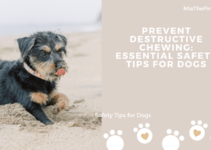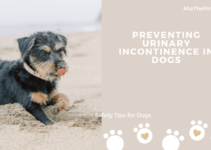Ultimate Guide to Tick Prevention for Dogs: Essential Safety Tips
When it comes to protecting our furry friends, tick prevention is of utmost importance. These tiny pests can transmit dangerous diseases to our beloved dogs, making it crucial for us to understand the tick life cycle and take necessary precautions. In this ultimate guide, we will delve into various aspects of tick prevention, including identifying common tick species, exploring tick prevention products, creating a tick-free environment, and implementing essential safety measures. Additionally, we will also explore natural tick prevention methods for those seeking home remedies and herbal solutions.
Understanding the Tick Life Cycle
Before we delve into tick prevention methods, it is essential to understand the tick life cycle. Ticks go through four stages: egg, larva, nymph, and adult. Each stage requires a blood meal to progress to the next, making our furry companions potential hosts. By understanding the life cycle, we can effectively disrupt their development and prevent infestations.
Identifying Common Tick Species
Not all ticks are created equal, and identifying the common tick species in your area can help you tailor your prevention strategies accordingly. From the American dog tick to the black-legged tick, each species has unique characteristics and habitats. By familiarizing yourself with these ticks, you can better protect your dog from their potential harm.
Tick Prevention Products: What Works and What Doesn’t
Tick prevention products flood the market, promising effective protection against these pesky parasites. However, not all products are created equal. In this section, we will explore various tick prevention products, including topical treatments, collars, and oral medications. By understanding what works and what doesn’t, you can make an informed decision when choosing the right product for your furry friend.
Creating a Tick-Free Environment: Tips for Your Home and Yard
Prevention is better than cure, and creating a tick-free environment is crucial in safeguarding your dog’s health. This section will provide you with essential tips for keeping your home and yard free from ticks. From regular yard maintenance to minimizing tick habitats, these proactive measures will significantly reduce the risk of tick infestations.
Essential Safety Measures: Tick Checks and Removal Techniques
Despite our best efforts, ticks may still find their way onto our dogs. Therefore, it is essential to implement regular tick checks and proper removal techniques. This section will guide you through the process of performing thorough tick checks and safely removing these pests from your dog’s skin. By following these safety measures, you can minimize the chances of tick-borne diseases affecting your furry companion.
Natural Tick Prevention Methods: Home Remedies and Herbal Solutions
For those seeking natural alternatives, this section explores various home remedies and herbal solutions for tick prevention. From essential oils to herbal sprays, we will discuss their effectiveness and safety. While natural methods may not provide foolproof protection, they can be used in conjunction with other prevention strategies for added peace of mind.
In conclusion, tick prevention is an essential aspect of responsible pet ownership. By understanding the tick life cycle, identifying common tick species, utilizing effective tick prevention products, creating a tick-free environment, implementing essential safety measures, and exploring natural prevention methods, you can ensure the well-being of your beloved dog. Remember, prevention is key, and with the knowledge gained from this ultimate guide, you can confidently protect your furry friend from the dangers of ticks.
FAQs
1. What is the tick life cycle and why is it important to understand?
The tick life cycle consists of four stages: egg, larva, nymph, and adult. Understanding this life cycle is important because each stage requires a blood meal to progress, and by disrupting their development, we can prevent infestations.
2. How can I identify common tick species?
Identifying common tick species in your area can help you tailor your prevention strategies. From the American dog tick to the black-legged tick, each species has unique characteristics and habitats. By familiarizing yourself with these ticks, you can better protect your dog from their potential harm.
3. What are the different types of tick prevention products available?
There are various tick prevention products available, including topical treatments, collars, and oral medications. It is important to understand what works and what doesn’t to make an informed decision when choosing the right product for your dog.
4. How can I create a tick-free environment in my home and yard?
To create a tick-free environment, regular yard maintenance and minimizing tick habitats are essential. This section provides tips for keeping your home and yard free from ticks, reducing the risk of infestations.
5. What are the essential safety measures for tick checks and removal?
Despite our best efforts, ticks may still find their way onto our dogs. Implementing regular tick checks and proper removal techniques is crucial. This section guides you through the process of performing thorough tick checks and safely removing ticks from your dog’s skin.


